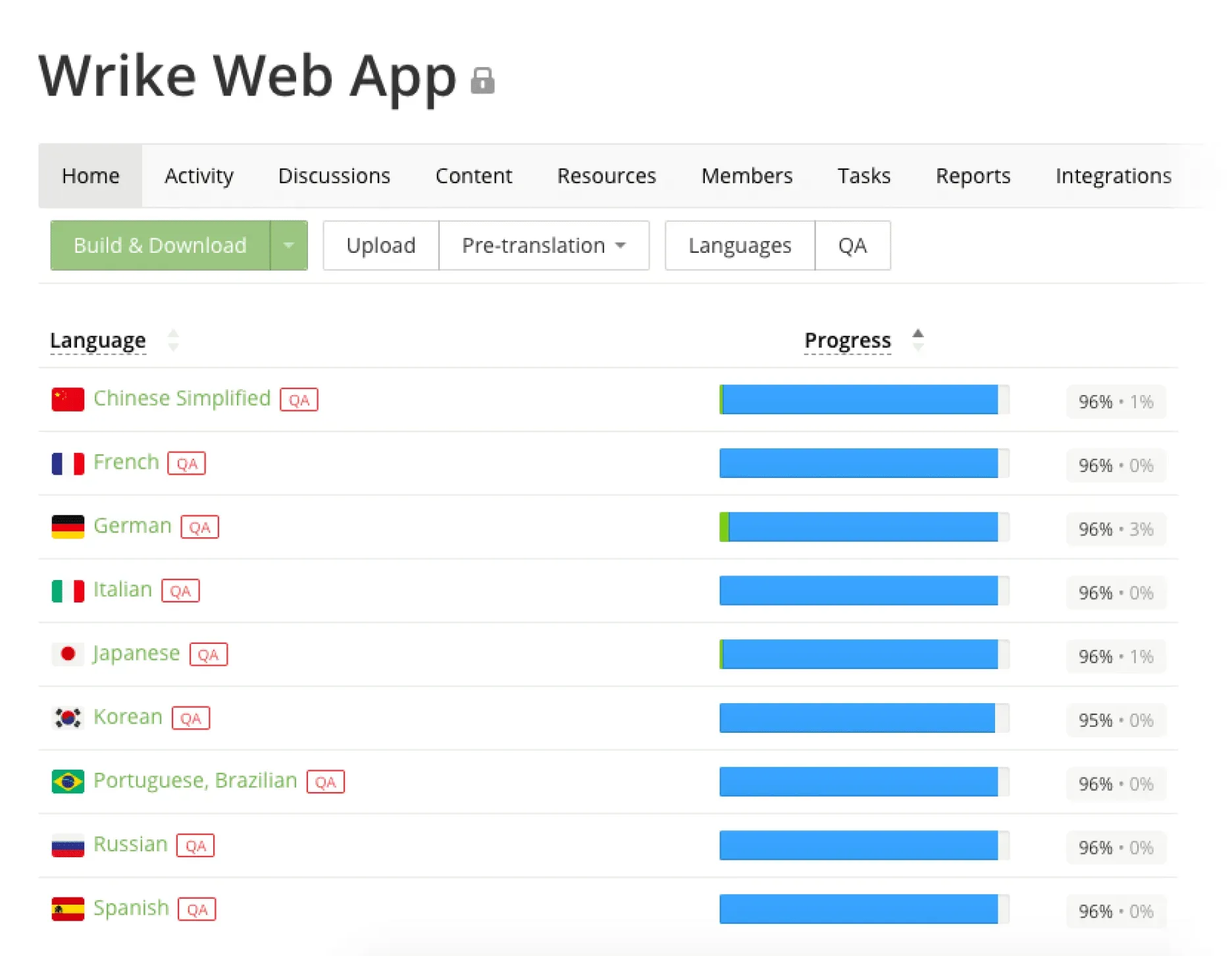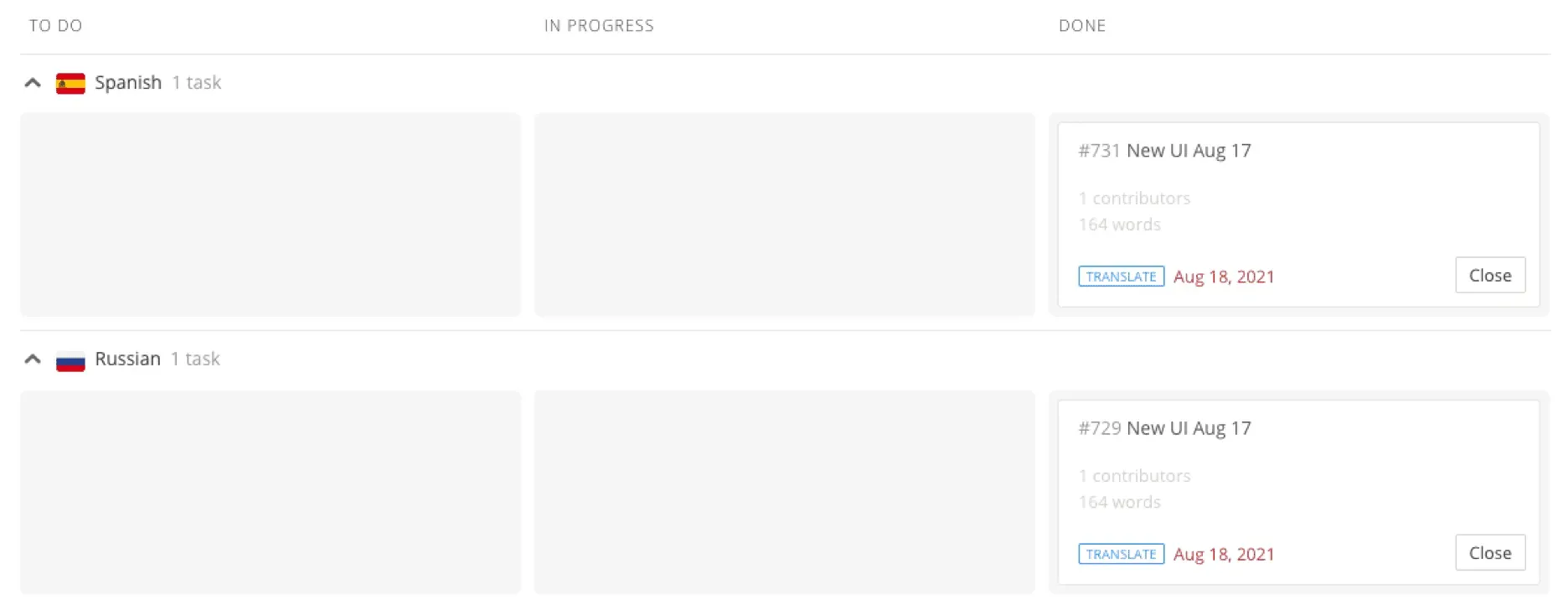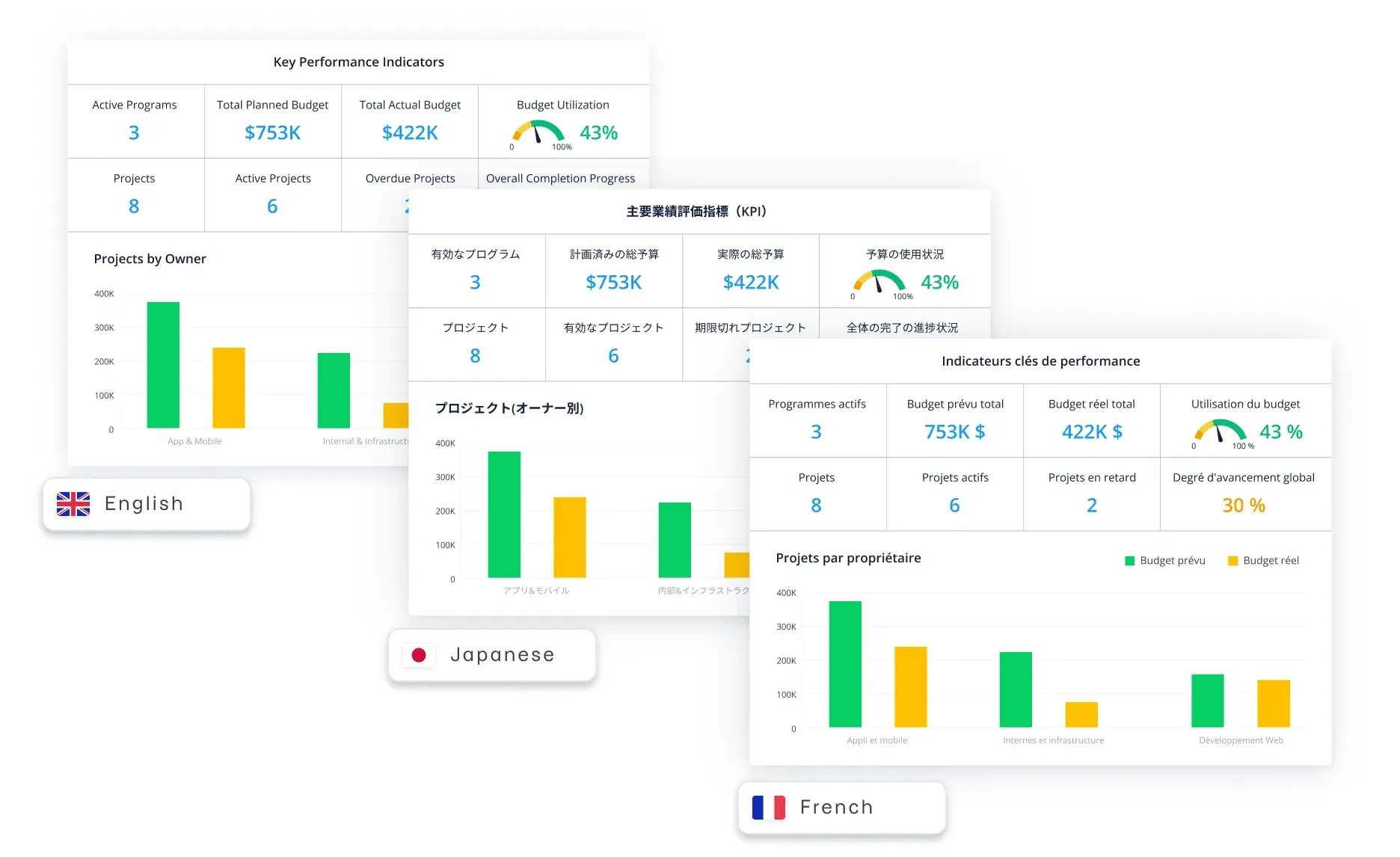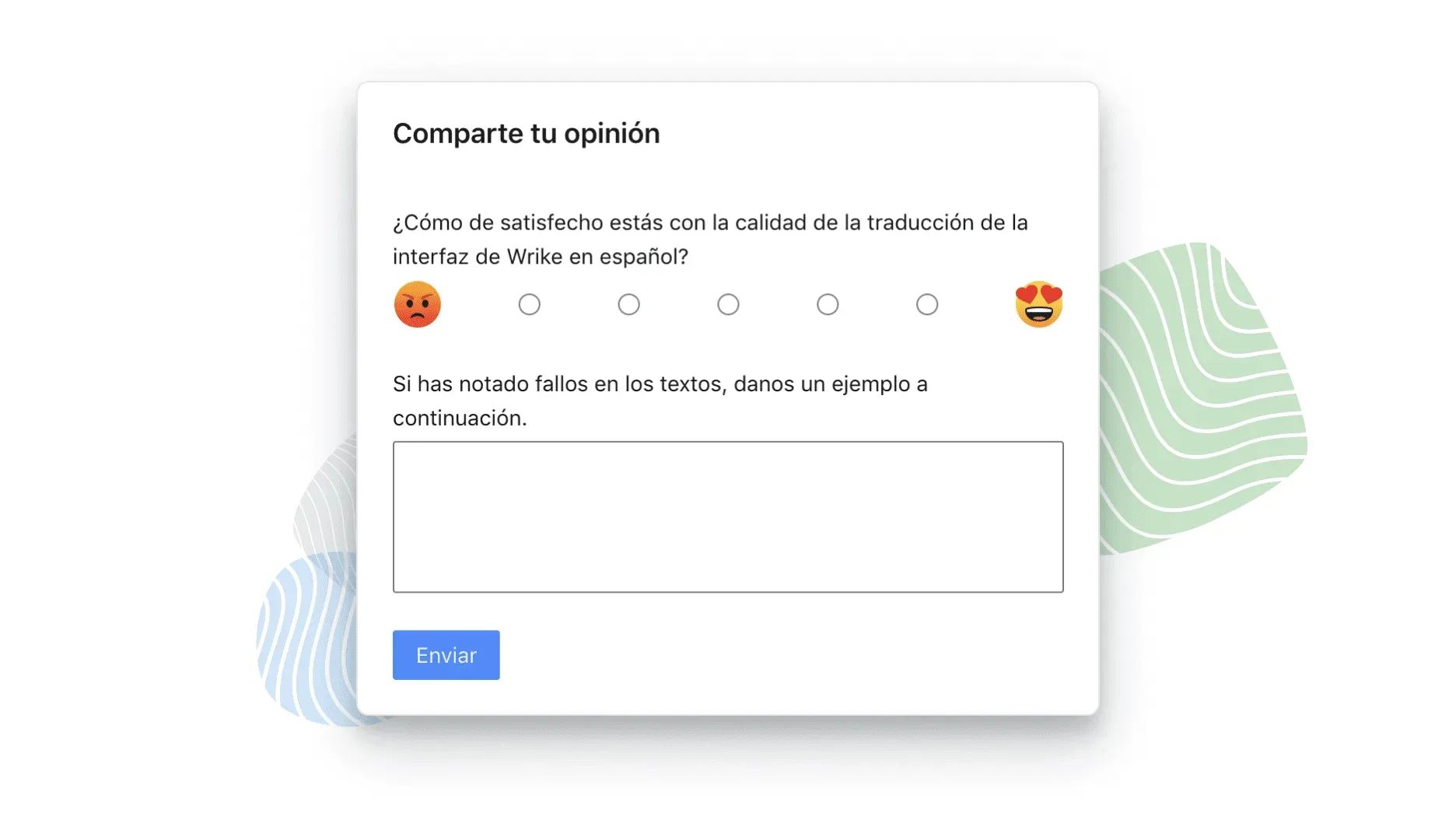Ivan Pugin is Localization Team Lead at Wrike, developers of project management software with a mission to help companies to be as productive as they can. At Wrike, Ivan and his colleagues have set up localization processes from scratch, seen the company’s growth from a start-up to a global player, and its acquisition by Citrix in early 2021.
In this blog, Ivan talks about setting localization up from scratch, his passion for automation, Wrike’s localization metrics, and the next steps for his small but perfectly formed team.
Setting Localization Up from Scratch
“Wow, time passes,” laughs Ivan. This year, he has been in IT as a localization team lead for ten years, with the last six setting up and managing localization processes at Wrike.
"Knowing all the LSP production tips and tricks really helped me in establishing localization processes on the enterprise-side.
Originally graduating with a degree in English Philology and Translation with a major in interpreting, Ivan’s localization career started in LSP project management. “Jumping from an LSP to client-side localization was really interesting,” says Ivan. “Knowing all the LSP production tips and tricks really helped me in establishing localization processes on the enterprise-side.”
At Wrike, Ivan joined an ex-teammate to set localization up from scratch. “Wrike felt more like a start-up then, with no established procedures, but we had a huge amount of support to create localization processes as we saw fit. It’s not always a given that localization has the development support it needs, but we were fortunate in having full access to resources and engineers early on.”
One of the first priorities for Wrike’s newly conceived localization team was to find the perfect fit with a TMS system.
For Ivan, choosing a TMS has a lot in common with finding the right LSP partner. “We don’t work with big industry monster LSPs, but with mid-sized boutique companies with whom we can have an individual relationship. It’s the same approach we applied to choosing the right TMS for Wrike. We evaluated about 5-10 systems at the time, looking for features that were important to us, and robust support with a human face, and that’s what we got with Crowdin.”

Regarding cooperation with LSPs, the Wrike team now for some projects cooperates with them directly in Crowdin and creates tasks instead of exchanging time-consuming emails. “Now we often create tasks without extra conversations, and everyone stays on the same page”.

Translation Is in The Definition of ‘Done’
Over the years, Wrike’s localization team has continued to assess TMS platforms, but Crowdin has always come on top. “There are no perfect solutions, but you can get close to perfect for your needs. The TMS you choose becomes a big part of your everyday life, and it feels like I’ve been with Crowdin forever. What Crowdin can’t offer, can’t be offered by other solutions either,” Ivan reflects.
"The TMS you choose becomes a big part of your everyday life, and it feels like I’ve been with Crowdin forever. What Crowdin can’t offer, can’t be offered by other solutions either.
Virtually all content at Wrike goes through Crowdin, from marketing and web to its UI.

Some of Wrike’s legacy UI architecture originates from the early years of development, including hard-coded content not originally intended for localization.
"We had to put a lot of work into automating the updates of UI texts, especially all this legacy content. Now our automation maturity level is very high, but it has required a lot of effort from us and our engineers to get here.
“Today, our UI localization is highly automated, but that wasn’t always the case,” explains Ivan. “We had to put a lot of work into automating the updates of UI texts, especially all this legacy content. Now our automation maturity level is very high, but it has required a lot of effort from us and our engineers to get here. UI content at Wrike comes from 30-40 different development teams, and one of our team’s managers still dedicates a lot of time to UI localization and automation.” Today, all the new strings from developers go directly into Crowdin.

Wrike’s localization team’s big dream is to work with exceptions only, and to automate everything else. “Maybe it’s every localization manager’s dream,” Ivan muses, “not to have to do anything manually, or as little as possible. But we have put a lot of effort into this, and we want to automate everything we possibly can.”
Integrated into development workflows, translation at Wrike is included in the definition of ‘done’. “Almost nothing is released until translation is ready,” confirms Ivan.
When The Company Grows, Localization Needs to Grow with It
Six years ago, Wrike’s localization team consisted of Ivan and his colleague, and even today, the team handles a hugely increased workload smoothly – with just three people.
"If you don’t scale localization processes as fast as the company grows, you will need to continue hiring more and more, and still you won’t be able to meet the growing demand.
“Having started localization from scratch, one of the most exciting things for me was to see Wrike grow from a start-up to an established, global company, which has now been acquired by a major industry player,” says Ivan.
“When the company grows fast, you need to grow with it, because if you don’t, localization gets left behind. If you don’t scale localization processes as fast as the company grows, you will need to continue hiring more and more, and still you won’t be able to meet the growing demand.”
“For our team at Wrike, it’s all about scalability of processes and automation. Every week, I’m surprised at how much work we handle. If I didn’t know better, I’d think the team was upwards of 5-6 people, even 10, rather than just the three of us. We’ve done a lot of work to get here, and part of that is thanks to Crowdin,” Ivan says.
“There’s obviously always room for improvement, but we must have done something right!”
Leads, Surveys, and LQA
At Wrike, the first and most important localization success metric is leads from localized web pages.
"There are of course other business metrics that come into play, but leads are a good way for us to understand if we need to expand on a particular language.
“We look at how many leads we generate for different languages,” Ivan explains. “There are of course other business metrics that come into play, but leads are a good way for us to understand if we need to expand on a particular language.”
On the product side, Wrike carries out regular client feedback surveys, asking clients if they are happy with the localization they see. The feedback is regularly reviewed, and improvement suggestions are logged as tasks.

Wrike’s localization team is in the middle of establishing new LQA processes for linguistic quality assurance. “We have always had internal proofreading as the final quality control, but we are now looking to get rid of that particular bottleneck, implementing LQA and just working with our partner LSPs,” Ivan describes the team’s objectives.
Next Up and a Piece of Advice to My Younger Self
Unsurprisingly, Ivan’s team’s focus for the next two years is firmly on technological solutions.
"Automation, always. We want to focus on automating as much as possible, and work towards our dream of handling exceptions only.
“Machine translation for definite,” says Ivan. “We’re actively evaluating MT and are in the early stages of seeing how we could make the most of machine translation with our content and workflows. Crowdin has several integrated MT engines which we can turn on quite easily, but we also want to understand the investment needed from our side, and how MT could work for us. We are hoping to have a pilot project running in a few months’ time.”
“Automation, always,” Ivan adds. “We want to focus on automating as much as possible, and work towards our dream of handling exceptions only.”
“Text-to-Speech is another pretty new and interesting area for us, for voiceover videos. The main challenge there is to establish a working process. That will take some time and effort, but when it’s eventually there, it will just work.”
For someone who remembers the days when MT was still a laughing matter, automated translation processes and new technologies are the future of localization.
“If I had to give a piece of advice to my younger self, my top tip would be to make everything as structured as possible, and to document everything. Establish processes from scratch where possible, as early as possible, and automate as much as you can. It’s definitely worth it in the long term!”
Automate localization processes to promote your company’s growth.
Khrystyna Humenna
Khrystyna Humenna is Head of Marketing, with over six years of experience in the localization industry. Her expertise is built on a deep understanding of various localization projects, informed by extensive customer interviews she has conducted.
